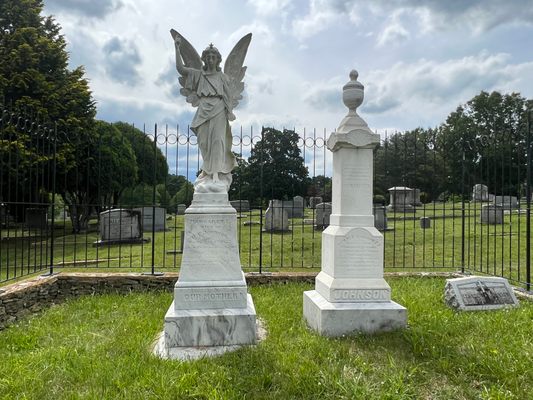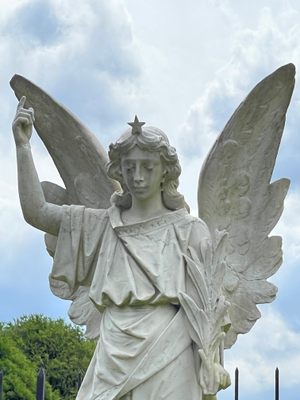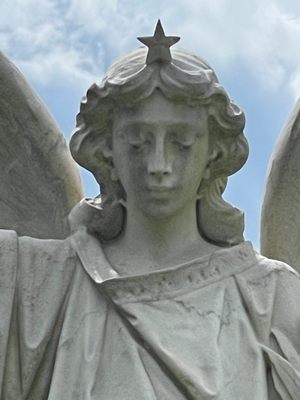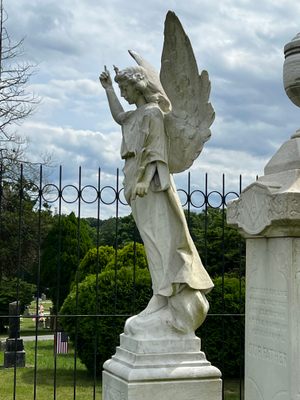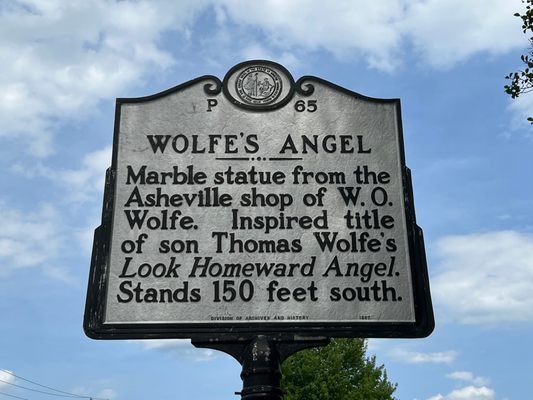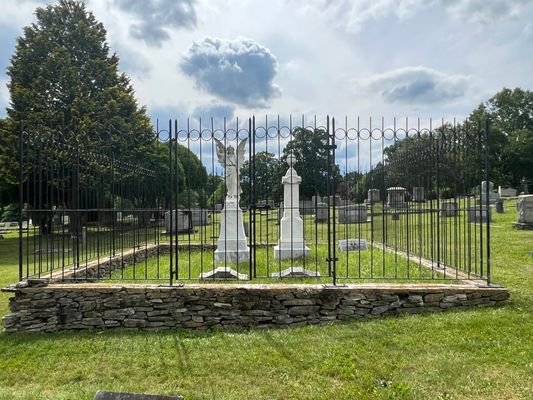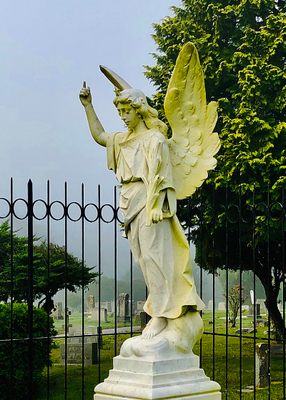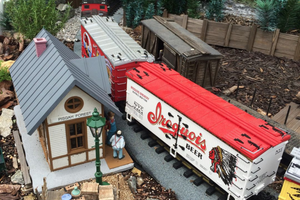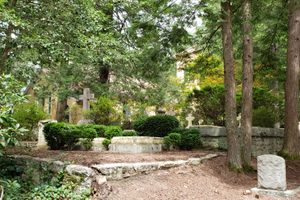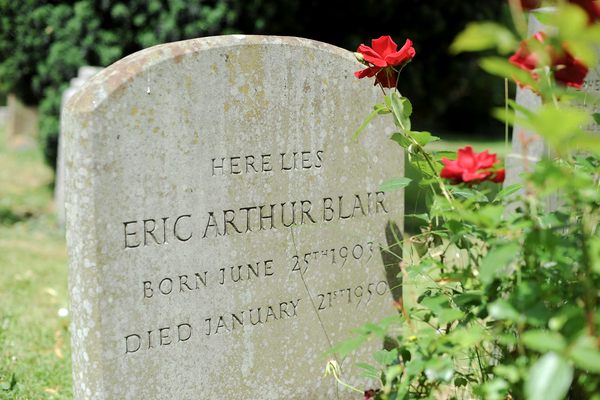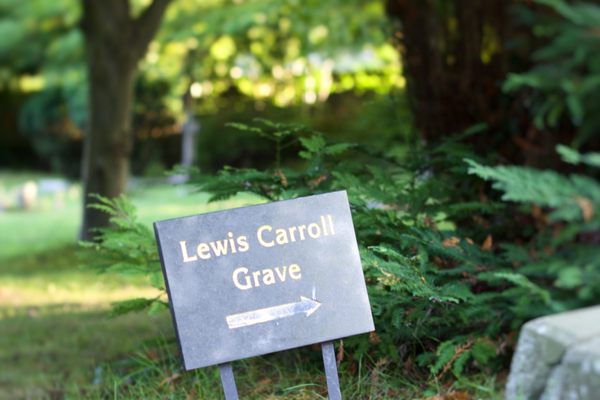About
The angel statue immortalized in Thomas Wolfe’s autobiographical novel, Look Homeward, Angel, now marks a grave at the Oakdale Cemetery in Hendersonville, North Carolina. Set in the fictional town of Altamont, Catawba, Wolfe’s coming-of-age novel is closely based on his family, neighbors, and upbringing in Asheville. Wolfe’s opus is replete with references to angels as symbols of unfulfilled hopes and dreams alongside the less-than-flattering depictions of the Asheville citizenry in the early 1900s.
As in the novel, Wolfe’s father, W.O. Wolfe, was a stonecutter. He maintained a tombstone and monument shop on the southeast corner of Pack Square in Asheville. The Jackson Building now stands on that spot. Western North Carolina’s cemeteries are full of the grave inscriptions, tombstones, and markers he produced. Although an accomplished artisan, the senior Wolfe did not have the skill to carve an angel’s face. The stone angel that inspired the novel’s angel was ordered from New York and stood for several years on the porch of Wolfe’s shop as an advertisement.
Although records indicate that Wolfe’s father sold at least a dozen Italian marble angels as grave markers, the angel in Hendersonville most closely matches the description in the novel. Like the fictional angel, “... it had come from Carrara, in Italy, and it held a stone lily delicately in one hand. The other hand was lifted in benediction; it was poised delicately upon the ball of one phthisic foot...” W.O. Wolfe sold that angel to the Johnson family in Hendersonville, North Carolina, in 1906.
The angel marks the grave of Margaret Bates Johnson, wife of Rev. Dr. Henry Johnson. Although Johnson died on May 26, 1905, in Brookhaven, Mississippi, she was reinterred in the Oakdale Cemetery in her hometown of Hendersonville. She rests next to her husband.
In 1949, Myra Champion, a librarian and Wolfe scholar, determined that the Hendersonville angel is the one the author referenced in his writings. A state historical marker describing the angel’s relationship to the novel stands on Highway 64 next to the cemetery. Unfortunately, Wolfe’s fans visiting the grave caused damage to the statue’s hand and wing that required repair. A wrought iron fence now surrounds the graves and monument to protect the angel from further harm.
While at Oakdale Cemetery, one can also visit the grave of Leila Maud Davidson Hansell, the “Sunshine Lady.” Hansell was a tuberculosis patient who feared spending eternity in darkness upon burial. When she died in December 1915, her husband interred her in an above-ground vault with glass prisms inlaid on the top. The glass ensured that the sun would always shine on her. By 1937, Oakdale Cemetery caretakers grew weary of ghoulish visitors to the gravesite trying to view the corpse and covered the vault’s top with cement. Coincidentally, Thomas Wolfe also died of tuberculosis in 1938 at the age of 37.
Related Tags
Community Contributors
Added By
Published
August 11, 2022
